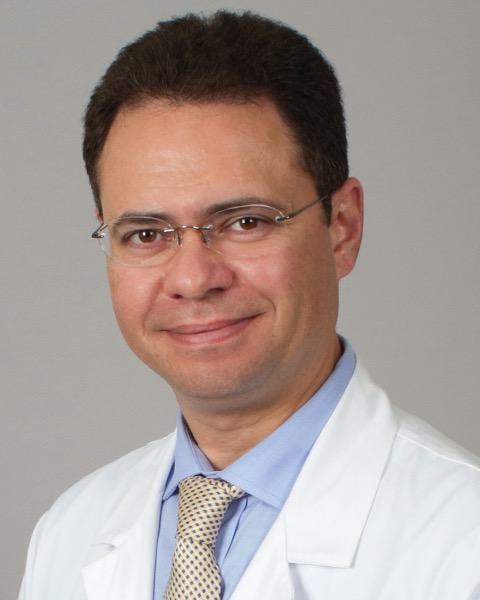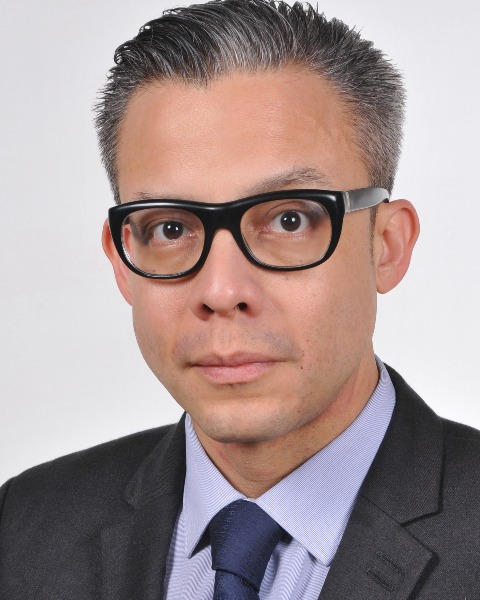Oncology: Prostate
063IC - Complications and Recurrence after Focal Therapy for Prostate Cancer
-

Andre Luis Abreu, MD
Assistant Professor of Clinical Urology and Radiology
University Of Southern California -
IG
Inderbir Gill, MD
Keck School of Medicine, University of Southern California, Los Angeles
-

Rafael Sanchez-Salas, MD (he/him/his)
Associate Professor
McGill University
Instructional Course Director(s)
Instructional Course Faculty(s)
Course Description: To present and discuss the several aspects of focal therapy (FT) for prostate cancer (Pca) with focus on preventing and managing complications and Pca recurrence.
Understanding the concept, rationale, indications, contraindications, patient selection and limitations of FT. How to avoid complications and troubleshooting intraoperative issues. How to follow up. The role of imaging and PSA on recurrence, recurrence definitions, functional and oncologic outcomes. Predictors for failure, long-term outcomes and comparison to radical treatment will be discussed. The salvage options and outcomes in FT failures and the role of FT as salvage treatment after radiation therapy will be explored.
The course will be presented in an interactive fashion where real index clinical cases will be presented, and Q&A using audience-response system. Videos will be used to show tips and tricks and complications. We will focus on practical issues of relevance, backed by current literature (rationale, protocols, outcomes data) and our personal aggregate experience with several technologies of FT for Pca.
Index cases and data will be presented such that the following issues will be discussed:
(1) Concept of FT: rationale and definitions.
(2) Technologies: understanding the different technologies, mechanism of action (tissue damage), how they destroy cancer cells. How to match the adequate treatment/technology to cancer characteristics, to patients’ characteristics and surgeons’ expertise. Different technologies will be presented: high-intensity focused ultrasound, cryoablation, TULSA, irreversible electroporation, FLA, gold nanoparticles, microwave, VTP/PDT, radiofrequency ablation.
(3) Patient selection: indications, contraindications and limitations: prostate size, calcifications, disease burden, rectal/anal stenosis. The role of imaging on patient selection multiparametric MRI, MRI/transrectal ultrasound fusion biopsy, multiparametric transrectal ultrasound, positron emission tomography-CT.
(4) Preoperative: patient preparation, bowel preparation, antibiotics, need for transurethral resection of the prostate.
(5) The ablation techniques: experts who are familiar with several devices available on the market will address the differences between the systems and show the techniques on how to perform ablation. Machine/devices setup, intraoperative troubleshooting, pearls, tips and tricks will be addressed.
(6) Safety margins for ablation: imaging-guided surgery using imaging fusion systems to FT and ensure oncologic margins for ablation.
(7) Complications: how to prevent/minimize and manage complications: urinary retention, infection, bladder neck contracture, rectal injury, fistulas. This will be a keystone of the course.
(8) Follow-up: How to follow up, current available/validated follow-up protocols. PSA, MRI, biopsies, when and how often.
(9) Oncologic outcomes: negative biopsy, absence of significant cancer on biopsy, avoidance of radical treatment and its inherent side effects, metastases-free survival?
(10) Local recurrence: the role of imaging on local recurrence. Definition of local recurrence by multiparametric MRI. The role of PSA and PSA kinetics on follow-up, biochemical recurrence definitions: Astro, Phoenix, Stuttgart.
(11) How to treat local recurrence: redo FT, salvage radical prostatectomy, androgen deprivation therapy, radiation therapy. This will be a keystone of the course.
(12) Functional outcomes: validate questionnaires and data on quality of life, continence and potency post FT.
(13) Special issue: salvage FT after radiation therapy.
(14) Clinical trials: published and current clinical trials on FT in Europe and U.S./North America.
(15) Future directions: Emerging techniques and technologies of FT will be discussed.
Adequate time for Q&A will be incorporated within the case/data presentations.
Learning Objectives:
- Prevent, recognize and manage complications and recurrence of FT for prostate cancer. How to troubleshoot intraoperative issues.
- Discuss concept, rationale, indications, contraindications and limitations of FT. Patient selection and maximizing chances of success. Energy/technique and technology selection.
- Describe postoperative care. How to follow up FT. The role of imaging and PSA on recurrence, recurrence definitions, functional and oncologic outcomes. The salvage options and outcomes in FT failures. The role of FT as salvage treatment after radiation therapy.
